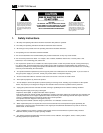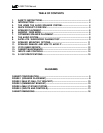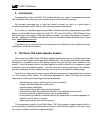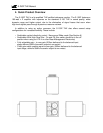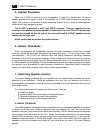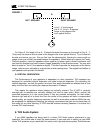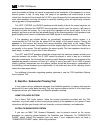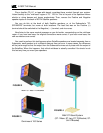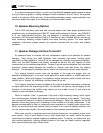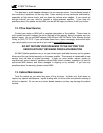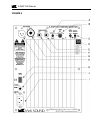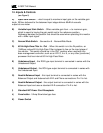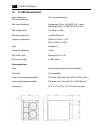
A red LED has been mounted on the center axis of the speaker. This LED can be used as
an alignment tool for final aiming of the loudspeakers and indicates perfect on axis alignment
when the LED is at its brightest.
Another way to determine the proper angle is to have a helper move the speakers while you
sit and listen. You should be able to hear the difference when the speakers are in the best
location by listening for the brightest high frequencies and for the best “focus” of sound, where
you hear the sharpest sonic imaging of voices and instruments. To do this, just play a pink or
white noise. When the speakers are aimed properly, you will hear the greatest amount of high
frequencies.You will be able hear a distinct differences in the highs when each speaker is at the
correct angle.
B. LOCATION AWAY FROM REFLECTING SURFACES
Your speakers should be located, whenever practical, away from walls, the floor, furniture, or
any other reflecting surfaces. Do the best you can. Objects close to the speaker will reflect
sound, and this reflected sound arrives at your ear slightly later than the direct sound, which blurs
sonic imaging and makes transients seem muted.The delay is very slight, so instead of hearing
an echo, you hear a "blurred" sound with less clarity that is not as sharp and distinct as it should
be. This time delay also affects frequency response and sonic imaging.
Bear in mind, however, that while many satellite speakers do not perform well when placed
on the floor, the S-150P is designed to deliver good performance whether sitting on the floor or
mounted above it.
If the speakers are on a television set or shelves, locate them on the front edge, so there is
no flat surface directly in front of them. If the speakers will sit close to walls or other large objects,
leave as much space as possible between the speaker and the object. Ideally, your speakers will
be several feet from the nearest surface, but in most rooms compromise is necessary.
Wherever you decide to place your S-150P speaker, you must allow room for ventilation of its
heatsink and backplate. The speaker’s power amplifier is mounted on the backplate, and it
generates heat. Therefore:
1. Do not place the speaker against a wall. Leave at least 3 inches of clearance for
the heatsink.
2. Do not place the speaker close to baseboard heaters or forced air heating
outlets.
C. SEPARATION BETWEEN LEFT AND RIGHT SPEAKERS
Here is a formula for achieving the ideal left to right stereo imaging. Think of a triangle formed
by the locations of the Left and Right speakers and your listening position. Ideally, the
subtended angle formed should be between 45 and 50 degrees. Roughly, this means that the
Left and Right speakers should be separated by about the same distance that you are sitting
back from the speakers. In other words, if the distance from your listening position to the point
directly between the speakers is 10 feet, place the speakers so their centers are 10 feet apart.
See Figure 1 on page 8.
S-150P THX Manual




